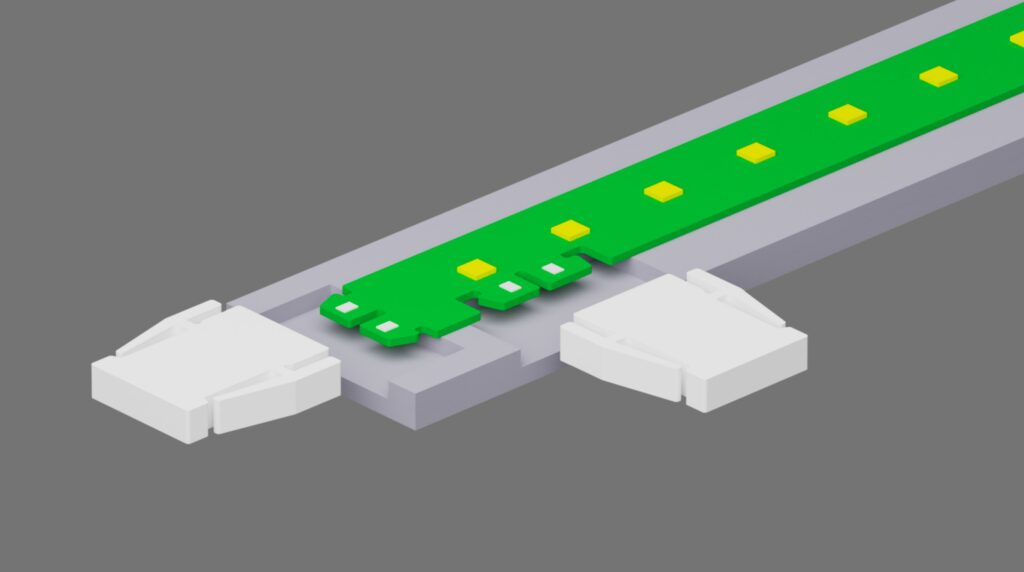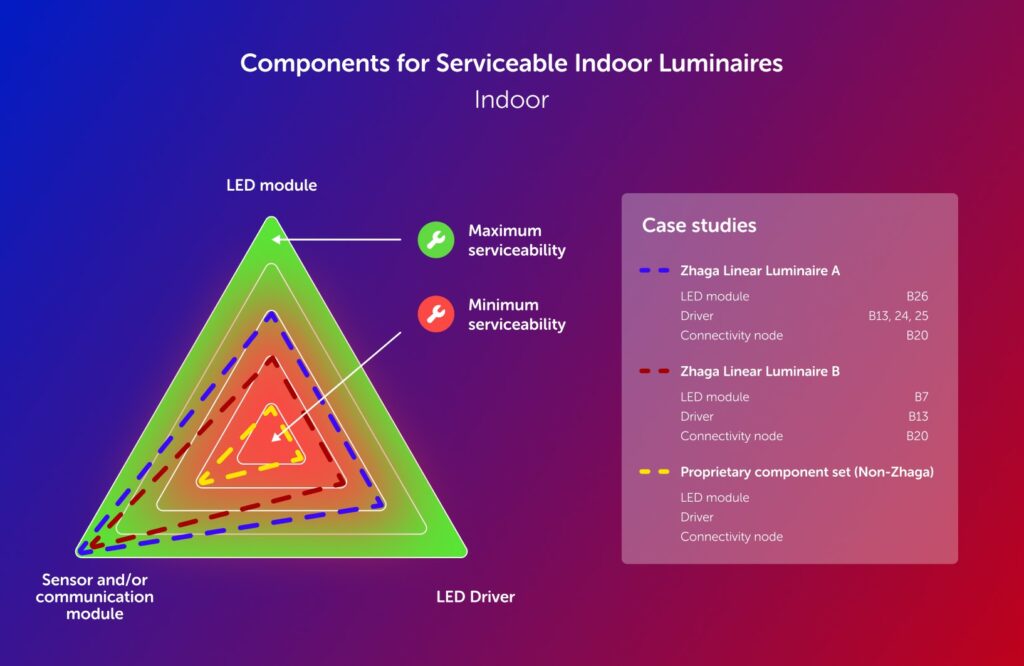By Jan de Graaf (Signify), Francesco Martini (Inventronics) and Carsten Moellers (Green Gems)
Zhaga enables luminaire manufacturers to design serviceable indoor luminaires with replaceable components that prolong their useful life, contributing to a circular economy.
In the pursuit of sustainability, the lighting industry is undergoing a profound transformation, driven by the imperative to embrace circularity. As the world’s demand for energy-efficient lighting solutions continues to soar, the need for serviceable indoor luminaires has never been more pressing. Zhaga, a pioneering consortium, is at the forefront of this paradigm shift, revolutionizing the way indoor lighting systems are designed, manufactured, and utilized.
Zhaga’s mission is clear: to enable luminaire manufacturers to create serviceable indoor luminaires with replaceable components, thus prolonging their useful life and contributing to a circular economy. This commitment to serviceability aligns seamlessly with the ethos of the Right to Repair movement, which advocates for the repairability of consumer goods across various industries, including lighting.

Legislators and decision-makers worldwide are recognizing the pivotal role of serviceability in advancing the circular economy. For example, in Europe, the “Single Lighting Regulation” is in force, setting product design requirements pushing the move to a circular economy. The published provisional agreement of the” Ecodesign for Sustainable Product Regulation (ESPR)“
looks to require that lighting products be designed to not only be more reliable, with a longer lifetime and contain more recyclable material, but also be easier, upgrade and repair. Additionally, it is expected, the future review of the so called “Single Lighting Regulation”, will set additional resource efficiency requirements for lighting products, concerning the removability and exchangeability of light sources and control gears.
Enter Zhaga’s concept of ‘circularity lighting’—a holistic approach that emphasizes enhanced serviceability through modular design and standardized component interfaces. Zhaga achieves this through a series of specifications known as ‘Books,’ each defining the interface of specific LED luminaire components. From LED modules and sensors to communication modules and control gear, Zhaga Books lay the foundation for a new era of serviceable indoor lighting.

Among the key Zhaga Books driving this transformation are Books 7, 14, and the upcoming Book 26. Book 7 delineates a family of linear and square LED modules suitable for indoor lighting applications, offering maximum design freedom while ensuring ease of installation and maintenance. Book 14, recognized meanwhile as IEC Standard 63356-1, focuses on a family of flat, linear, socketable LED light sources that are suitable for low-profile linear lighting. Book 26, on the other hand, defines a cost-effective interface for replaceable linear LED modules, facilitating plug-and-play interoperability and late-stage configuration.
Also relevant to indoor lighting is Book 20, which, together with D4i certification by the DALI Alliance, defines a smart interface between an indoor LED luminaire and a sensing and / or communication modules. The node connects to the LED driver and control system, and typically can provide sensory inputs or enable communication between network components. These nodes can be installed and replaced in the field.
Two other Zhaga Books that are relevant to the serviceability of indoor luminaires are 24 and 25, both of which deal with Near Field Communication (NFC) technology. The extremely short-range wireless communication standard allows manufacturers to configure such lighting components as LED drivers to their specifications, both before and after installation – which can play an important role in enabling circularity lighting.
NFC also lets you manage data over the luminaire’s entire lifecycle, from production to installation, maintenance, replacement and repair. Having such lifecycle data not only helps increase efficiency, it also promotes products that use a modular design and that can be easily repaired and upgraded.
The diagram illustrates how various Zhaga Books contribute to the serviceability of LED drivers, modules and sensor and/or communication modules.

The inside of the graphic points to a minimum serviceability while the outside refers to a maximum serviceability.
Minimum serviceability means that the component is replaceable and only that. Maximum serviceability however indicates that the component is replaceable, based on a global standard, is plug and play, has a socket, and in case of a driver is programmable with NFC.
The benefits of Zhaga’s approach extend beyond manufacturers to encompass stakeholders across the lighting ecosystem. Luminaire manufacturers stand to gain interoperability, access to global markets, and compliance with evolving regulations. City governments and building owners benefit from future-proof investments, while lighting designers and architects enhance their value proposition by recommending circularity-based lighting solutions.
By embracing Zhaga’s vision of circularity lighting, the lighting industry is poised to navigate the challenges of a rapidly changing landscape, characterized by evolving regulations and growing consumer demand for sustainable solutions.
In conclusion, Zhaga’s relentless pursuit of serviceable indoor (and outdoor) luminaires marks a significant milestone in the journey towards a circular future for the lighting industry. By standardizing interfaces and promoting modularity Zhaga is paving the way for a more sustainable and resilient lighting ecosystem.







Recent Comments